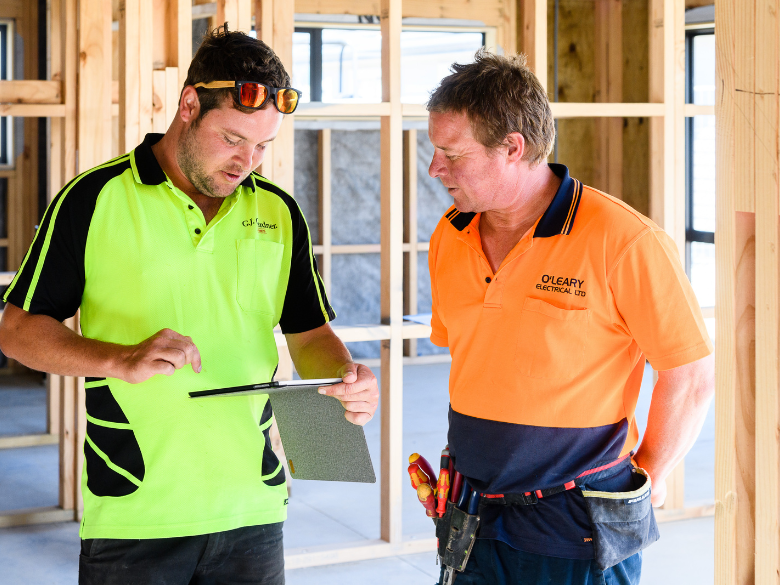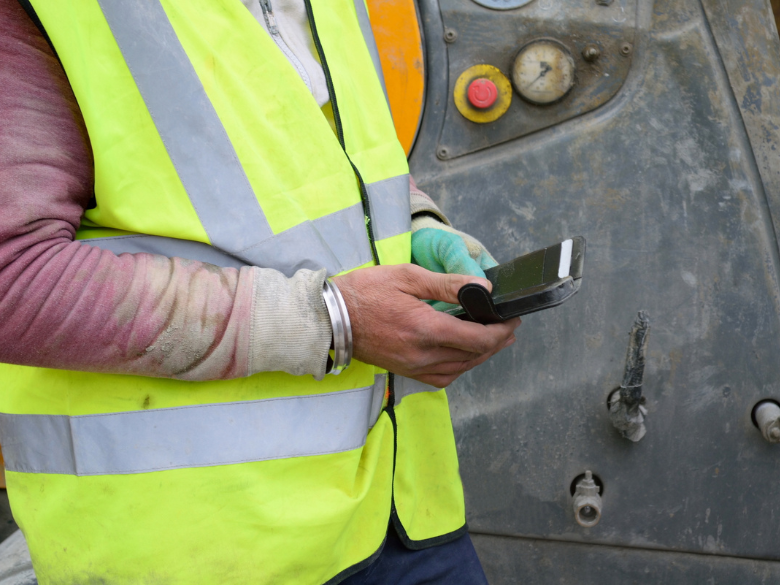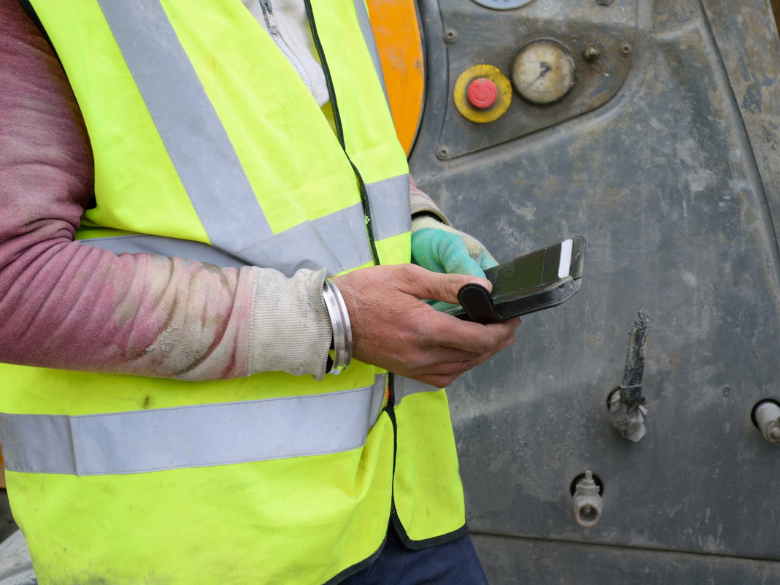
Good health and safety isn’t about stopping work — it’s about having simple, clear processes so everyone understands how to get the job done safely.
When you plan the work and manage the risks, you build a site where safety becomes second nature.
Before starting any task, pause and look at what could go wrong. A couple of minutes now can prevent someone from getting hurt later.
If it’s not recorded, it’s easy to miss and hard to manage.
A clean, well-run site is a safer site. Regular checks keep everyone on track.
Good sites don’t just happen they’re reviewed and improved every day.
Safety isn’t a box to tick, it’s how you work.
When everyone takes action, speaks up, and looks out for each other, safety becomes part of everyday work, not just an extra task.
Any questions, get in touch with the team at HazardCo
It’s that time of year again – the calendar’s full, the jobs are piling up, and everyone’s looking forward to a well-earned break. You’re pushing to get the last few projects over the line, finish the paperwork, and keep the team happy.
We get it. The end-of-year rush can be intense. But when the pressure’s on, it’s easy for safety checks to slide down the list. The focus shifts to finishing fast, not necessarily finishing right.
Before you pack up the tools and head home, take a moment to make sure your sites are still running safely and smoothly. A few minutes of care now can save you a whole lot of stress in the new year.
When things get busy, the best way to stay on top of safety is to make it simple. That’s where the Site Review feature in the HazardCo App comes in.
A quick walk around your site with a Site Review helps you spot what’s working well and what needs a tidy-up before the holidays. Think of it like your site’s end-of-year health check – quick, straightforward, and right there on your phone.
You can snap photos, add comments, and tick off areas as you go, so you’ve got a clear, time-stamped record of your site’s condition. It’s an easy way to confirm that everyone’s working safely, everything’s in order, and nothing’s been missed in the year-end rush.
And if you’re a business owner or site supervisor, it’s a great peace of mind, you’ll know your sites are in good shape while you’re taking that well-deserved break.
Not sure what to look for? No problem. The Site Review feature guides you step-by-step through what to check on-site, from tidy work areas and secured materials to the basics like PPE, access ways, and equipment condition.
It’s designed to make safety simple, even if you don’t have a dedicated health and safety person on your team. You’ll quickly see what’s running smoothly and what could use improvement, and you’ll have a clear, digital record you can refer back to anytime.
That means less guesswork, less paperwork, and fewer headaches when you come back in January.
Before you shut down for the year, take a few minutes to complete a Site Review. It’s a small step that helps you wrap up confidently, knowing your sites are tidy, safe, and ready for a fresh start in the new year.
When you come back after the break, you’ll hit the ground running, not scrambling to fix what got missed in the rush.
So before you call it a year, do one last thing to protect your team, your reputation, and your business: run a Site Review in the HazardCo App.
You’ll finish the year strong, and start the next one even better.
Thank you to everyone who entered our ‘From Hard Hats to Holidays – Win a $4,000 Escape!’ competition during October. Keep an eye out in your inbox for our health and safety updates.
Congratulations to the winner:
Travis from G.J. Gardner Homes Warragul
HazardCo has partnered with Pointsbuild, one of Australia’s leading providers of online CPD and compliance training, to give HazardCo’s Complete members free access to the WHS Risk Management Training course, delivered by Pointsbuild.
This partnership is all about adding more value for HazardCo members and helping lift the standard of health & safety across the building industry. Together, we’re making it easier for builders and business owners to understand, manage, and reduce risk, because better knowledge means safer worksites and more confident teams.
Founded in 2007, Pointsbuild was Australia’s first approved CPD training provider for the Built Environment. Now offering nearly 200 courses and delivering more than 30,000 courses each month.
The one-hour online WHS Risk Management course takes HazardCo members through a systematic approach to identifying, assessing, controlling, and monitoring potential hazards and risks on-site. It covers:
By joining forces, HazardCo and Pointsbuild aim to make it easier for members to upskill, improve safety outcomes, and confidently meet compliance obligations.
The Risk Management Training, delivered by Pointsbuild, is available to HazardCo’s Complete members. Get in touch with the team to find out more.
Construction sites come with plenty of obvious hazards but some of the most dangerous ones are the ones you can’t see. One of those hidden risks is respirable crystalline silica dust (RCS), extremely small particles that can be breathed deep into your lungs, increasing the risk of serious lung diseases
If you’re cutting, grinding, sanding, or polishing materials like concrete, stone, brick, or mortar, there’s a good chance you’re creating RCS dust. And while it might not look like much, breathing it in can cause serious, long-term health problems.
When silica dust gets into your lungs, it can cause a disease called Accelerated Silicosis. This is a fast-acting, life-threatening condition that scars the lungs and makes it harder to breathe over time. The tricky part? You might not even notice symptoms until the damage is already done.
That’s why it’s so important to understand the risk and take simple steps to control it.
Safework Australia recommends several ways to reduce exposure and keep your crew safe:
Most people who develop silicosis didn’t realise they were at risk. That’s why it’s vital to talk about RCS, train your team, and make sure everyone knows how to stay safe.
At the end of the day, the goal is simple: everyone goes home safe and healthy.
Want to learn more about managing silica dust on-site? Get in touch with the friendly team at HazardCo. We’re here to help you keep health and safety simple.
From 1 October 2025, SafeWork NSW is rolling out a Silica Worker Register (SWR), a new system to track workers doing jobs that expose them to respirable crystalline silica dust.
If your crew cuts, drills, grinds, or polishes concrete, bricks, tiles, or any other silica-containing material, this change affects you.
The SWR is an online register where businesses (PCBUs) must record details of any worker carrying out high-risk silica work.
This helps SafeWork NSW track exposure, monitor worker health, and prevent silicosis and other dust-related diseases.
Key start date: 1 October 2025
Timeframe: You must register a worker within 28 days of them starting high-risk silica work.
Who needs to be registered?
You’ll need to register any worker who performs high-risk silica tasks, such as:
If you’re unsure whether work is high-risk, play it safe and register your workers.
You’ll need to enter details for both your business and the worker, including:
The register is part of NSW’s effort to reduce silica-related disease and improve worker safety across construction and trades.
Failing to register can lead to penalties but more importantly, this is about keeping your crew healthy and protected.
What Should Do Now
The Silica Worker Register isn’t just more paperwork, it’s about protecting your team’s health.
Check out these additional resources:
Or call our Advisory Team on 1800 954 702.
This blog is based on a webinar we ran earlier this year. You can get access to the recording here.
A visit from a safety regulator can make even the most experienced builder a little nervous. But as HazardCo’s Senior Health and Safety Advisor, Glenn Smith, shared in a recent webinar, these visits are not always about catching people out, they’re about ensuring everyone goes home safe at the end of the day.
Regulators such as WorkSafe or SafeWork might visit your site for several reasons:
“Sometimes they’re just checking in, other times they’re responding to a concern,” Glenn explains. “But they’re not out to get you – they just want to make sure people are working safely.”
First rule: don’t panic. Always welcome the inspector onto your site politely and check their ID to confirm who they are. Regulators are usually easy to identify with branded uniforms, badges, and vehicles.
Be open and cooperative. “Don’t drop your hammer and bolt, they’re just doing their job,” Glenn says. Provide the documents they ask for, such as your SWMS, safety plans, induction records, and toolbox meeting notes.
Being organised makes a great first impression. Inspectors are far more comfortable when they can see your systems are in order. Having everything stored digitally, such as in the HazardCo App, can make this process fast and stress-free.
To find out the common mistakes to avoid and how to be inspection ready all year round, watch the webinar recording.
If you’re after more information about what to expect when your worksite is inspected by WorkSafe/SafeWork, check out this blog.
Slips and trips might seem harmless, but on-site they’re one of the biggest causes of injuries. A bit of ground clutter, a wet floor, or poor lighting is all it takes to put someone out of action.
Here’s the breakdown:
Businesses must make sure slip and trip hazards are spotted early and dealt with properly. That means checking the site, managing risks, and keeping controls up to scratch.
Reducing slips, trips, and falls starts with simple, practical steps that everyone on-site can take.
Good housekeeping makes all the difference. The HazardCo App has handy checklists to keep your site tidy and safe.
Don’t wait for a near miss to remind you. Start managing slips and trips today and if you need a hand, the HazardCo team is only a call away.
When you’re running a construction site, there’s already enough on your plate, the last thing you need is to be drowning in paperwork or missing a key safety step. That’s why we’ve pulled together a straightforward checklist to keep your team safe, your site compliant, and your projects moving smoothly.
Think of this as your pre-game warmup. Get these things sorted before the first nail goes in:
Safety isn’t “set and forget” it’s about checking in regularly:
At the end of the day, good safety practices don’t just tick a compliance box, they keep your crew safe, reduce downtime, and save you headaches when auditors or regulators come knocking.
The best part? With HazardCo, you can ditch the endless paperwork and manage everything in one easy system.
Health and safety doesn’t need to be complicated. With the right systems in place, you can focus on building, while knowing your site is covered.
Download your free Builder checklist, or Trade checklist.
Want an easier way to stay on top of it all? Get in touch with us or start a free trial.
Every year in September, people around the world mark Global Deaf Awareness Week (22–28 September 2025). It’s a chance to recognise the importance of communication, accessibility, and inclusion for the Deaf community. For those of us working in construction, it’s also the perfect reminder of how precious our hearing is, and how easily it can be damaged by the noise we’re exposed to every day.
Power tools, heavy machinery, vehicles, and hammering – the soundtrack of a busy site is loud. And while it might just feel like “part of the job,” that constant exposure can take a serious toll on your hearing over time.
Noise-induced hearing loss (NIHL) happens when loud sounds damage the sensitive structures in your inner ear. Depending on the type and extent of damage, NIHL can be temporary or permanent. The good news? Unlike many other forms of hearing loss, NIHL is entirely preventable.
It’s also very common. According to Safe Work Australia about 28–32% of Australian workers are exposed to loud noise at work. People who work in noisy industries, like construction, agriculture, carpentry, mining, oil and gas, and the military, are especially at risk.
You might be surprised at just how quickly noise becomes dangerous. Here are some benchmarks:
On a construction site, these levels are reached every day, sometimes without us even realising.
Hearing loss doesn’t usually happen all at once. Symptoms can creep up slowly, which is why many people don’t notice until it’s too late. Some of the most common signs of NIHL include:
There are two main types of NIHL:
Hearing loss doesn’t just affect you at work. It changes your whole life.
And the effects don’t stop there. Untreated NIHL has been linked to:
In short, it doesn’t just change what you can hear, it changes how you live, connect, and feel day to day.
The good news is, hearing loss from noise exposure is 100% preventable. Here’s how:
If you think you might already be experiencing signs of NIHL, don’t ignore it. Talk to your primary care physician or healthcare provider – they can refer you to an audiologist (hearing specialist) or otolaryngologist (ear, nose, and throat doctor) for further tests.
Specialists use a range of hearing assessments to diagnose NIHL and check if there are any other contributing factors. Getting tested early is important: even if hearing loss can’t be reversed, the right support and treatment can help you manage symptoms, protect the hearing you have left, and improve your quality of life.
This week, let’s not just raise awareness, let’s take action. Protect your hearing, look out for your team, and start conversations about noise on-site.
Because hearing isn’t just about safety at work. It’s about being able to connect, laugh, share stories, and enjoy life for years to come.










